It is no secret that Wyoming is one of the most beautiful and popular states in the United States. Millions of people visit this secluded area of the western United States every year, but it is sparsely populated, evoking the feel of an old frontier. Even though solitude and calm are hard to beat, they do have their downsides. Are you aware that the state is home to many predatory animals? Check out the 8 most dangerous animals in Wyoming and where you’ll find them!
1. Grizzly Bears
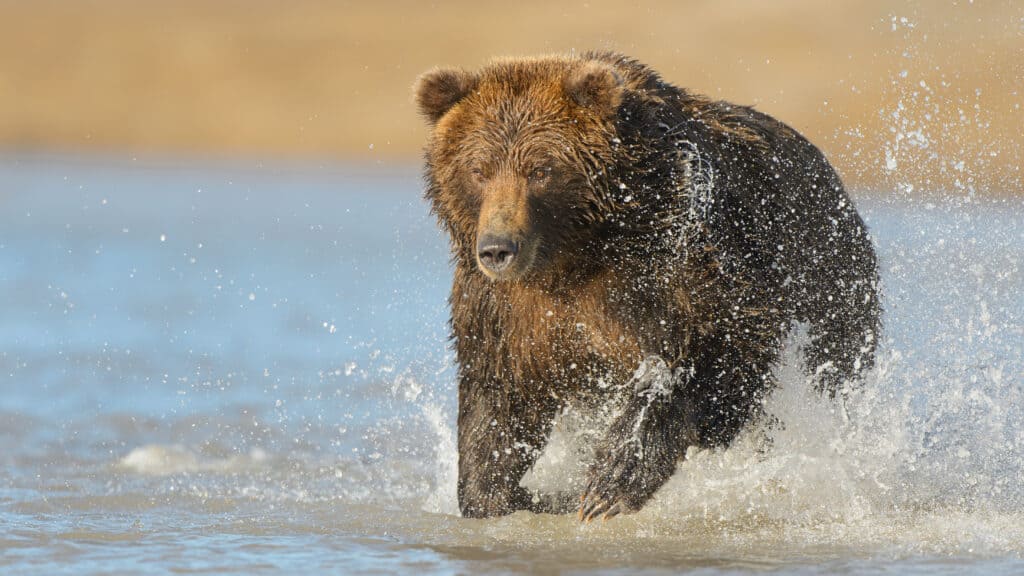
The
Grizzly bear
population in the areas surrounding Yellowstone has exploded over the years.
©NaturesMomentsuk/Shutterstock.com
The grizzly bear starts off our list of the most dangerous animals in Wyoming – and for good reason. The Greater Yellowstone Ecosystem, which includes parts of northwest Wyoming, contains approximately 700 grizzly bears. Because of this, one should be cautious of the grizzly bear, the most dangerous bear in the state. When you see grizzly bear cubs around, it is in your best interest to walk away from them. They are fiercely protective of their young. They’ve got razor-sharp teeth and claws, so you don’t want to be at their mercy!
2. Prairie Rattlesnake
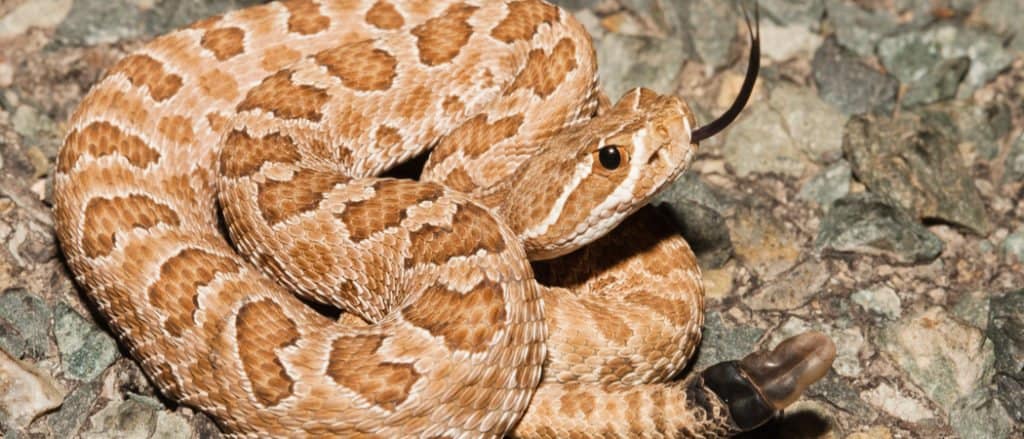
Prairie rattlesnakes are found east and west of the Continental Divide in Wyoming.
©Nathan A Shepard/Shutterstock.com
The prairie rattlesnakes are venomous pit vipers that have diamond-shaped heads and short necks. They are found throughout Wyoming but are more prevalent in the northwest. An average snake is between 3ft and 5ft long. Keep an eye out while walking around and don’t wander off the trail if you see a prairie rattlesnake. Although prairie rattlesnakes are dangerous, they aren’t aggressive and won’t attack humans unless provoked.
3. Midget Faded Rattlesnake
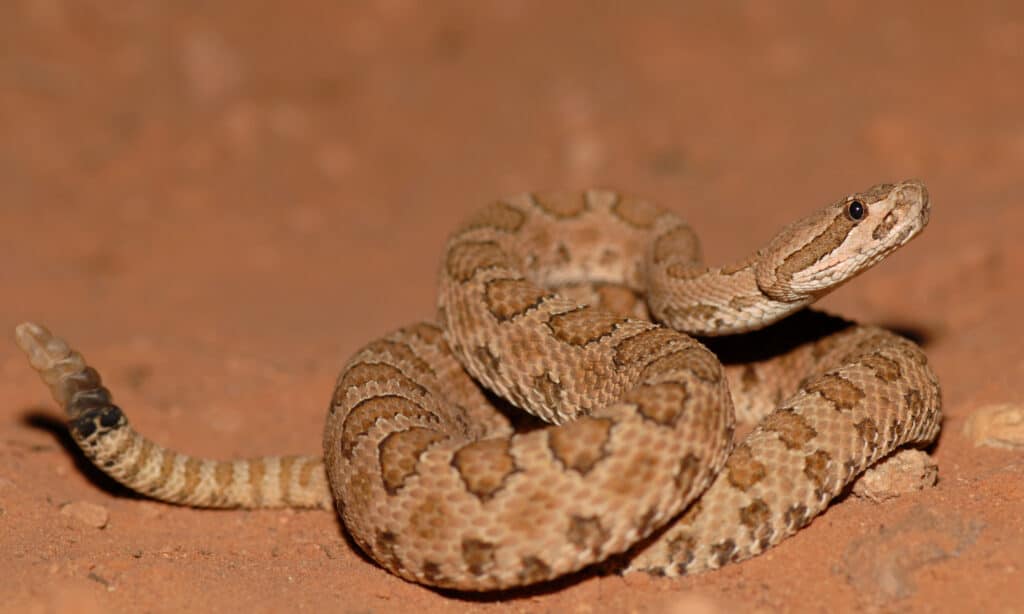
Although the midget faded rattlesnakes are a protected species in Wyoming, they are occasionally killed by people due to their venomous nature.
©Rusty Dodson/Shutterstock.com
Wyoming’s Lower Green River Valley is home to the Midget Faded Rattlesnake. Even though it can only be found in a small area of Wyoming, we still include it on our list. This is because, like the prairie rattlesnakes, the midget faded rattlesnakes are also venomous. As a matter of fact, their venom is one of the most toxic in North America. If you ever happen to see one out in the wild, be smart and walk away.
4. Bison
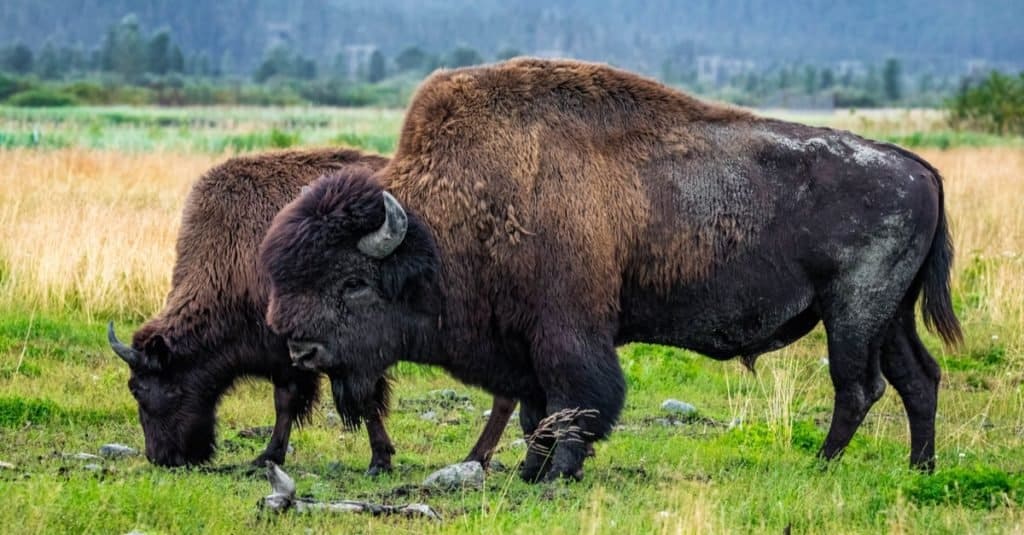
Though they may look peaceful, bison can be dangerous and unpredictable and are known for charging at people without warning.
©Photo Spirit/Shutterstock.com
Bison are known for their aggressive behavior and territorial nature. According to a Yellowstone study published in 2000, bison are twice as dangerous as grizzly bears. They stand over 6 feet tall and weigh more than 2,000 pounds. Several indigenous tribes hold this beast sacred. In spite of this, the bison almost went extinct as a result of overhunting. Visiting Wyoming today, you will find bison in the Yellowstone National Park in the northwest corner of the state. One of the most recent bison attacks took place in 2020 when a woman was attacked by the animal while taking a selfie. This is why the bison is one of the most dangerous animals in Wyoming.
5. Mountain Lions
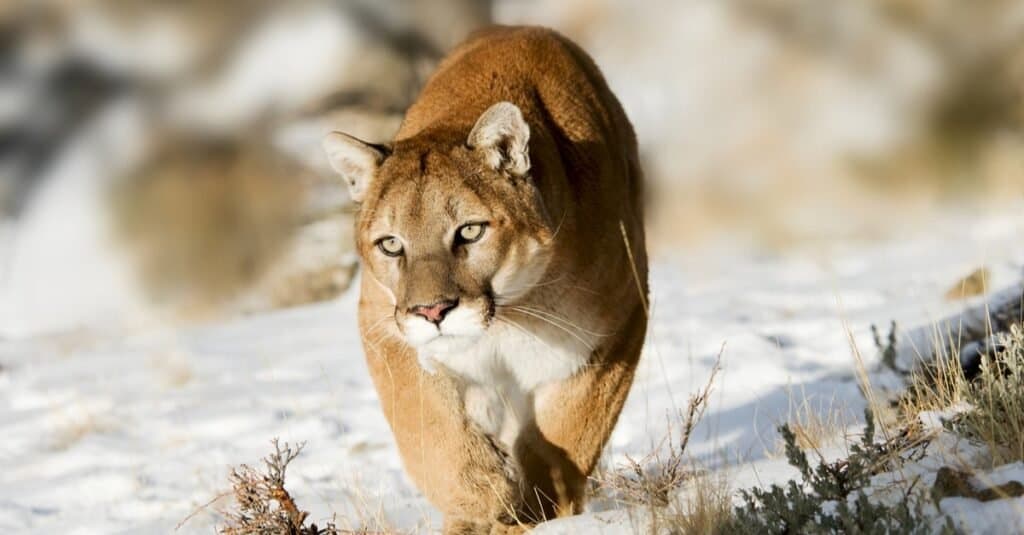
The number of mountain lions in the state of Wyoming is estimated to be around 2,000.
©Scott E Read/Shutterstock.com
In the Cowboy State, mountain lions are definitely considered to be one of the most dangerous animals. Wyoming has a high prevalence of mountain lions, despite their infrequent sightings. The preferred habitat for the animals is rocky, brushy spaces with steep slopes or cliffs in addition to scattered openings in the trees. The stealth and sneakiness of mountain lions is what makes them so frightening. Even though they weigh around 200 pounds, you might not hear them coming. Also, they have claws and teeth and don’t mind using them. You’re best off hiking with a group and keeping your ears open. There’s no point in becoming a mountain lion‘s dinner.
6. Gray Wolf
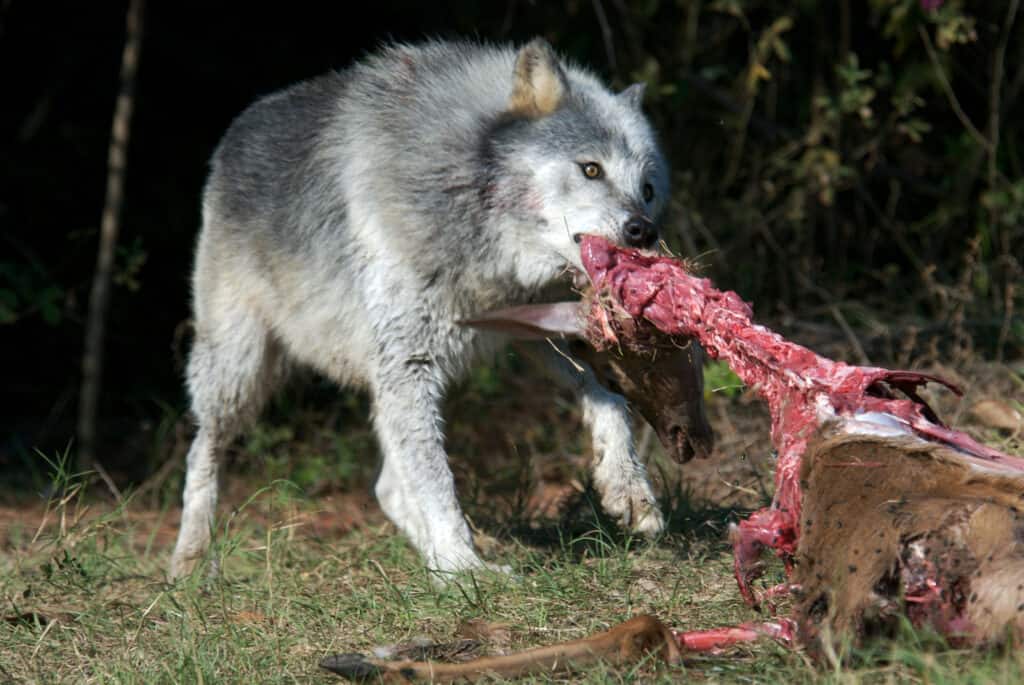
In the mid-1990s, gray wolves were reintroduced to Yellowstone National Park and are estimated to number 311 in Wyoming as of 2019.
©Daniel Korzeniewski/Shutterstock.com
During the old days, gray wolves roamed all over Wyoming. In the course of the settlement of the land, however, people almost hunted them to extinction. In recent years, gray wolves have become protected, and their numbers have been steadily increasing. However, it’s important to remember that they are wild animals and can be dangerous. The sharp teeth of these 125 pound canines can tear their prey apart. Unless they have rabies, they don’t attack people outright, but it’s best to stay away.
7. Moose
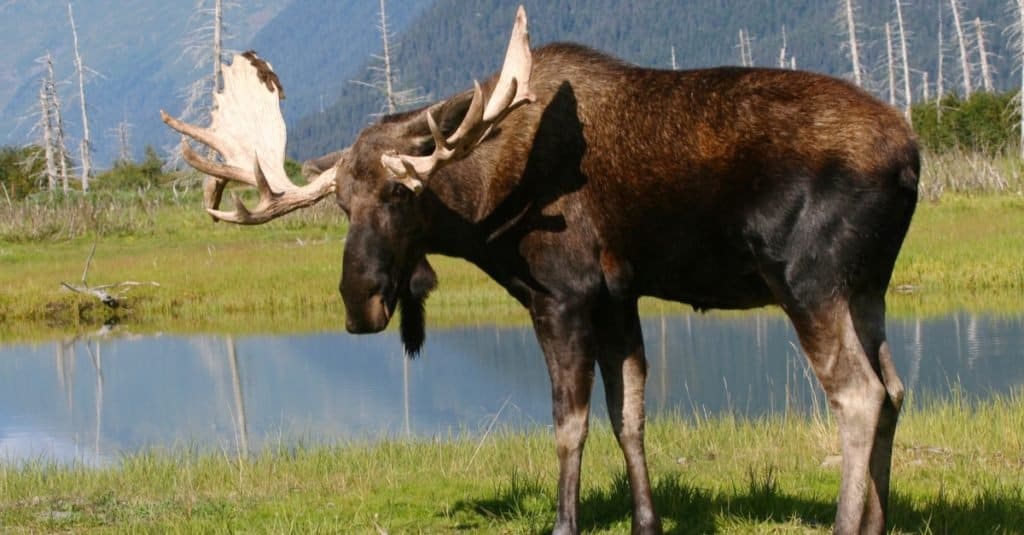
Female moose are protective and aggressive and male moose can be territorial and aggressive during fall mating season.
©Steve Bower/Shutterstock.com
As of now, Wyoming’s moose population stands at around 3,500 animals. A large number of moose live in Grand Teton Park. The best places to see them are Willow Flats, Christian Pond (near Willow Flats), and Oxbow Bend. They can be quite intimidating to approach, as they weigh over 1,000 pounds and stand over 6 feet tall. Since moose are not typically terrified of humans, they will not flee if you approach them. Generally, they are not aggressive, but if you catch them off guard, they can become protective. It is possible that a moose could charge you in this situation, resulting in death.
8. Snapping Turtle
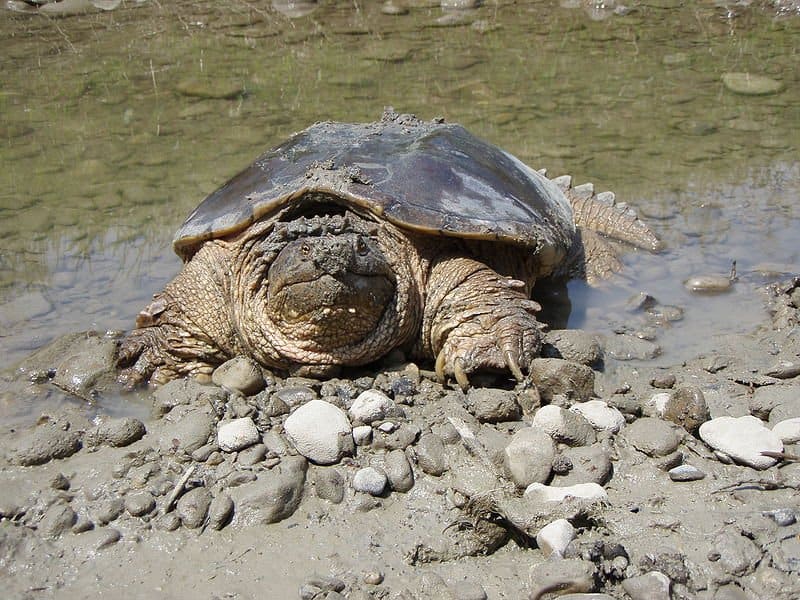
Eastern Wyoming is home to a large population of snapping turtles that live in lakes, ponds, and marshes throughout the region.
©Ontley – Public Domain
You might not think that a turtle deserves to be on a list of the most dangerous animals in Wyoming – but you’d be wrong! Most of Wyoming is home to the Common Snapping turtle, a large, freshwater species that live in permanent bodies of water. Despite their cute appearance, you should avoid them. On land, the turtles can be aggressive and hiss and bite if cornered. It is important to note, however, that they are not particularly aggressive and will only attack if they feel threatened.
The photo featured at the top of this post is © O.S. Fisher/Shutterstock.com
Thank you for reading! Have some feedback for us? Contact the AZ Animals editorial team.






